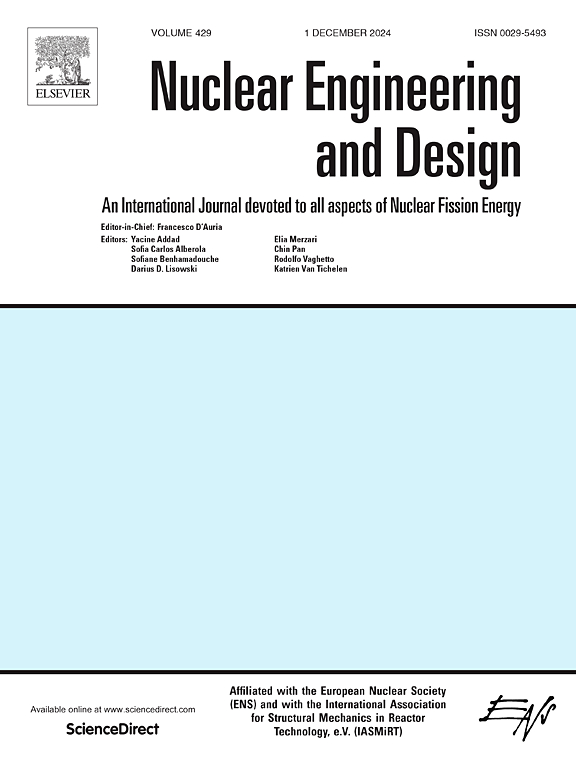Hybrid neural network and statistical forecasting methodology for predictive monitoring and residual useful life estimation in nuclear power plant components
IF 1.9
3区 工程技术
Q1 NUCLEAR SCIENCE & TECHNOLOGY
引用次数: 0
Abstract
Lifetime extension of key components of Nuclear Power Plants (NPPs) is of great importance for reliable and continuous energy production. In this regard, the present paper proposes a novel Neural Network (NN) and time-series forecasting-based approach for the prediction of the health condition of nuclear components and the estimation of Remaining Useful Life (RUL) regarding Class II components, focusing on critical piping systems that may be subject to Flow- Accelerated Corrosion (FAC). A digital replica of a Class II piping was implemented in a finite element code to simulate the progressive thinning it suffers because of operational and environmental conditions. To the aim of the present study, generated synthetic data have been employed in the training phase of the NN model. Autoencoder, which is a special type of NN, that compresses input data into one major holistic signal representing the component’s health status, is used. The component RUL is computed in this study by the ARIMA algorithm. Results showed that the adopted hybrid methodology is capable of forecasting accurately the piping plastic deformation 6 to 14 months in advance, thus allowing for better and more efficient NPP maintenance and management.
求助全文
约1分钟内获得全文
求助全文
来源期刊

Nuclear Engineering and Design
工程技术-核科学技术
CiteScore
3.40
自引率
11.80%
发文量
377
审稿时长
5 months
期刊介绍:
Nuclear Engineering and Design covers the wide range of disciplines involved in the engineering, design, safety and construction of nuclear fission reactors. The Editors welcome papers both on applied and innovative aspects and developments in nuclear science and technology.
Fundamentals of Reactor Design include:
• Thermal-Hydraulics and Core Physics
• Safety Analysis, Risk Assessment (PSA)
• Structural and Mechanical Engineering
• Materials Science
• Fuel Behavior and Design
• Structural Plant Design
• Engineering of Reactor Components
• Experiments
Aspects beyond fundamentals of Reactor Design covered:
• Accident Mitigation Measures
• Reactor Control Systems
• Licensing Issues
• Safeguard Engineering
• Economy of Plants
• Reprocessing / Waste Disposal
• Applications of Nuclear Energy
• Maintenance
• Decommissioning
Papers on new reactor ideas and developments (Generation IV reactors) such as inherently safe modular HTRs, High Performance LWRs/HWRs and LMFBs/GFR will be considered; Actinide Burners, Accelerator Driven Systems, Energy Amplifiers and other special designs of power and research reactors and their applications are also encouraged.
 求助内容:
求助内容: 应助结果提醒方式:
应助结果提醒方式:


